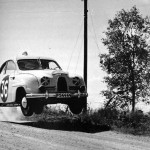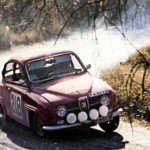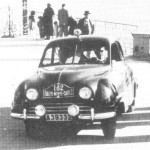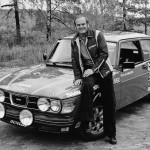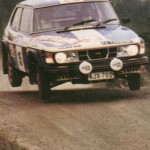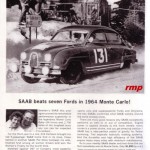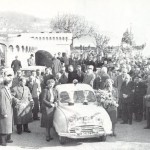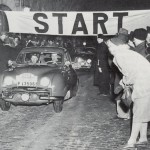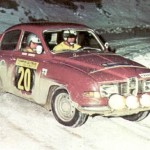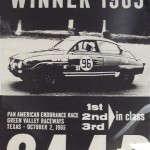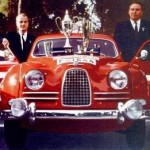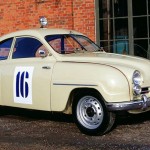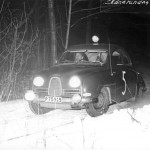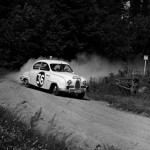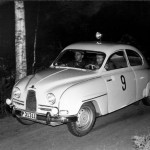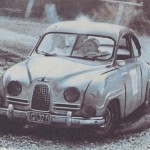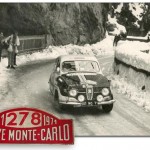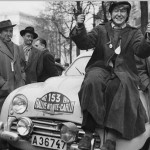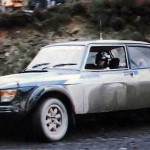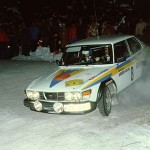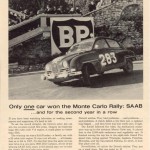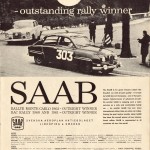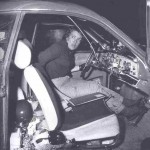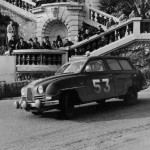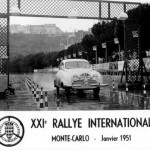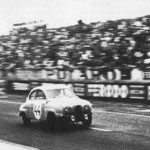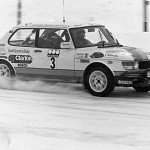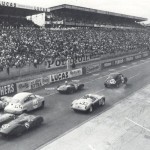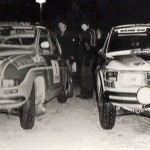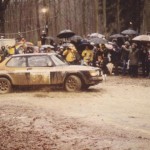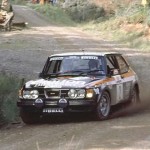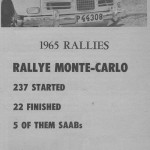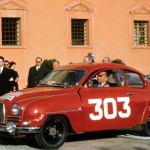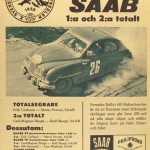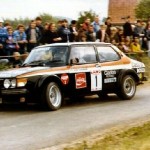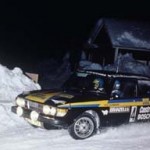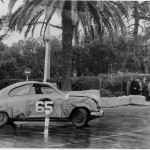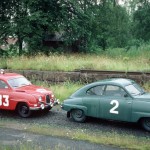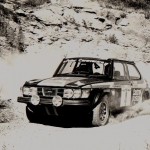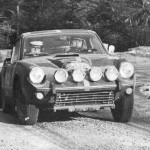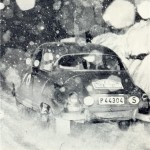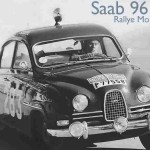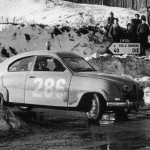Goodbye you crazy Swedes
This week sees another motor manufacturer succumb to the 21st Century –the unique Swedish marque, Saab. With General Motors having to bail out its European operations, the time has come for the defiantly, definitive Scandinavian marque to shuffle off into oblivion. Its uniqueness was probably what did for it in the end, for while Saabs have, in recent years, shared their floorpans with more mundane Opel and Vauxhall machinery, there has nevertheless been a wilful quirkiness in their design; a carry-over from the company’s heyday in the Sixties and Seventies.
In competition Saab was no less unique. Its doughty front-wheel-drive cars were born and proven on the fast, flowing forest tracks of Sweden and Finland, finding grip in the ice and snow where no traditional rear-wheel-drive car would dare to travel. The first of these curious-looking Swedish machines to achieve international honours was the lozenge-shaped Saab 92, which arrived in a Europe still locked into pre-war designs looking like a cross between a Volkswagen Beetle and Flash Gordon’s rocket.
Throughout the 1950s the 92 starred in the lower classes of the tough wintry reliability run that was the Monte Carlo Rally, but Saab started getting ambitious as a new decade approached. First came a brace of new 93 models competing at the 1959 Le Mans 24 Hours, resulting in a strong second in class, but Saab’s heart lay in the icy wastes and so back to the snow and gravel it would go for its golden era.
Erik Carlsson became an overnight sensation with the all-new Saab 96 in 1960, winning three RAC Rallies in the next three years and claiming the Monte Carlo Rally in 1962 and ’63 to boot. The dark red machines with their distinctive two-stroke three-cylinder engines made Saab recognisable the world over, and turned Carlsson into a superstar, but while the 96 continued in production until the late 1970s in competition it had no answer to the Mini-Cooper, Porsche 911 or Alpine-Renaults that began to dominate from the mid-Sixties.
What followed was the Saab 99 – the car that came to define how these cars looked right up until the factory was readied for closure this week. With its notchback tail and square-rigged nose, the boxy 99 was developed to add creature comforts and make the occupants as secure as possible against roving elks and virtually every other hazard known to man.
Before too long the 99 was rallying – and a new superstar was born. As ABBA bestrode the charts, so Stig Blomqvist joined the very top flight of rally practitioners, having learnt his left foot braking skills on the Swedish tundra at the wheel of various early Saab models, then brought those skills plus his natural bravado behind the wheel to bear on the world championship’s biggest events.
In 1976 Blomqvist won the Rally Boucles de Spa, notching up the 99’s first international victory. In 1977 he won his second Swedish Rally (the first having been six years earlier in a 96), but back at the factory there was something even more special going on: turbocharging. While Porsche was making headlines with the 911 Turbo, Saab was quietly applying forced induction to the boxy 99 to make a genuine executive express. By 1979 the Saab 99 Turbo was a Q-car legend, and with it the original Stig won his third Swedish Rally – the first ever WRC event to be won by a turbocharged car.
It was all becoming a bit much for Saab, however. The advent of Group B and the construction of homologation specials meant that the sensible side of Saab won out, and in 1980 the competition department closed forever. For Blomqvist this was the opportunity to move on to less esoteric choices of car and ultimately a world championship title with the Audi Quattro, but his passion was ever for hustling front-wheel-drive machines through gripless, wintry scenery.
I had the pleasure of taking a ride alongside Stig in a front-wheel0drive Skoda Felicia just before the 1996 RAC Rally, and was spellbound by his Saab-learnt driving style. In essence the car was driven using only his feet, the brake and accelerator communing with the landscape while with just the tips of his thumb and first finger on the wheel he managed the whole process in glacial calmness.
That year the RAC Rally was one of ice and snow, the last time that it would traverse England, Scotland and Wales. And with snow tyres prohibited, the original Stig strutted his original stuff to beat off a raft of turbocharged 4WD machines in his 1600cc Skoda, claiming an historic third place overall. Skoda owed a great deal to Stig, and thereby Saab, and it’s easy to see why the softly-spoken bombshell at the wheel glowed with such pride that weekend.
Long may those who had the pleasure of working for Saab share that sort of pride – for theirs is a unique story in the history of the sport.
Read more feature stories here
Images: Saabrallysport.come2me.nl

